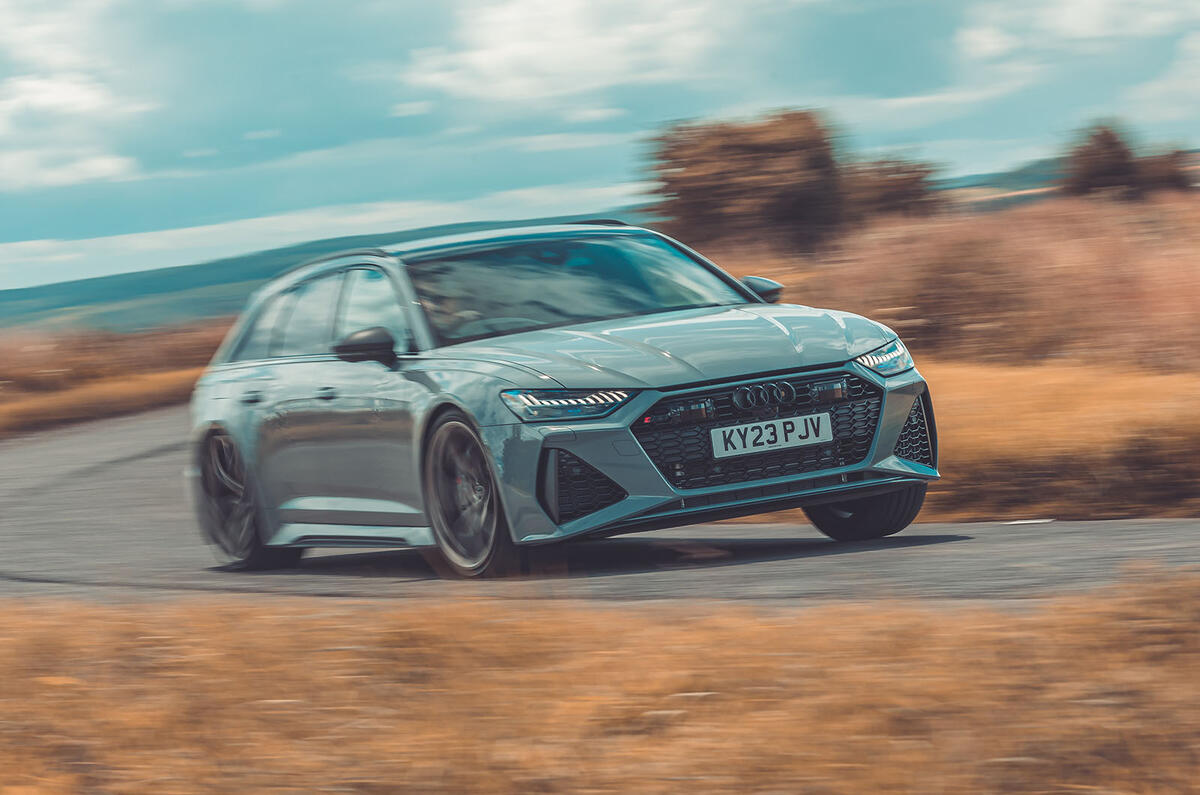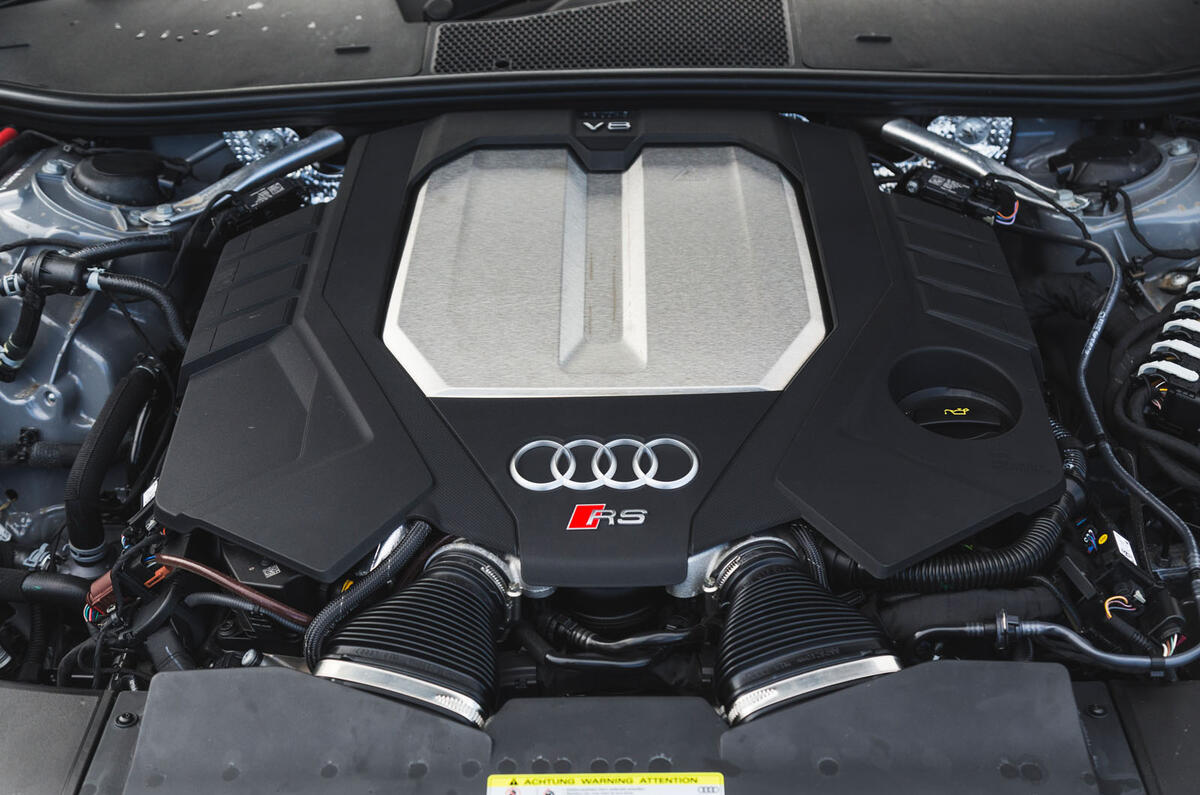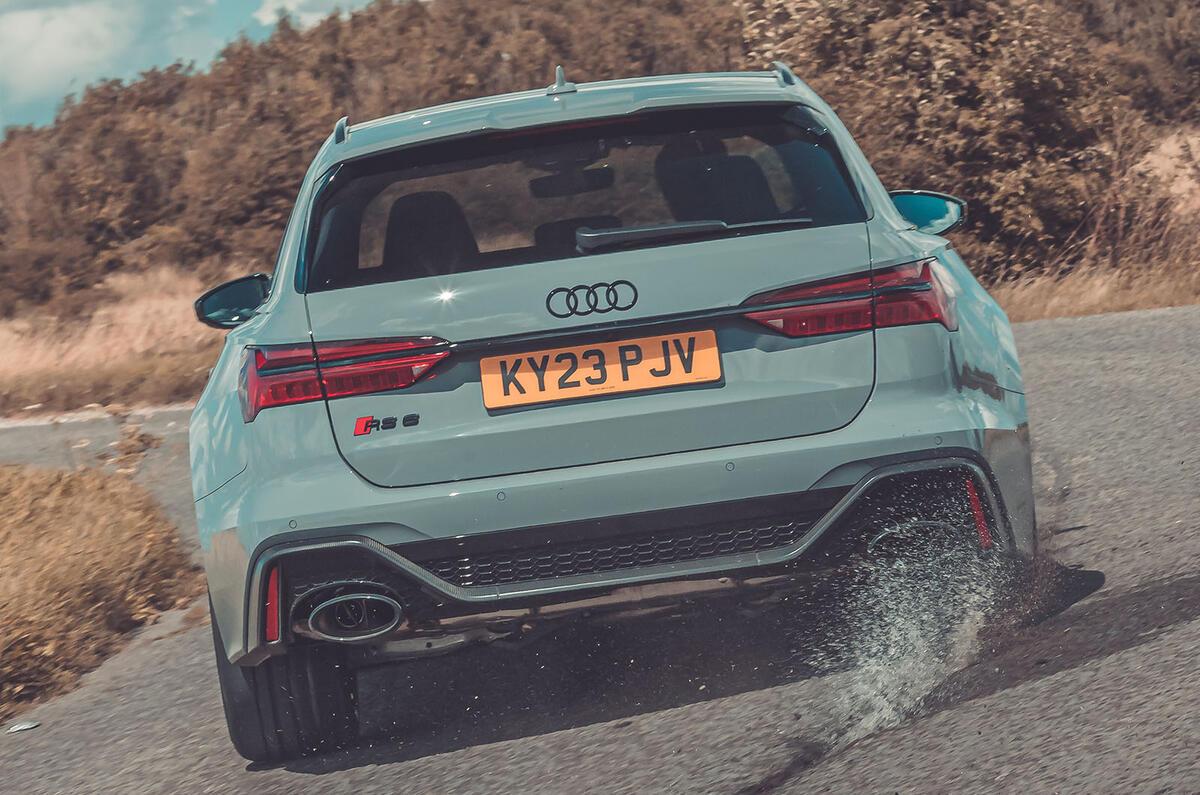There are quite plainly some notions of wider Volkswagen Group performance car hierarchy to which the RS6 Performance is wonderfully immune.
When the original car was launched in 2019, it was as menacing and purposeful as an RS6 should be, if slightly less restrained than the cars that preceded it. And that clearly demonstrates itself with the RS6 Performance, which, over the original, gets lightweight wheels, beefed-up equipment levels - and a hiked price.
Its 3996cc V8 replaced the 3993cc unit that was co-developed with Bentley and first used in 2011. It’s the same mill you’ll find in a current Bentley Continental GT, Bentayga V8, Porsche Panamera GTS and Porsche Cayenne Turbo. In the RS6 Performance, however, the twin-turbocharged engine (now with a perfectly ‘square’ cylinder bore/stroke ratio; the last version’s V8 was slightly long-stroke) is allowed to develop more power and torque than in any of those other applications.
Performance edition cars have had their power and torque figures increased over the 591bhp and 590lb ft you got from the original car. The hikes aren’t huge, and we won’t claim that they make huge differences on the road. An extra 30 horsepower, and a similar gain on torque, has been delivered through larger turbochargers. That those gains act on a 2.1-tonne estate car is what makes it a little hard to feel the difference.
The RS6 was, let’s face it, indecently rapid already. It needed extra grunt about as much as dive planes and a periscope - and the reason it’s got it can’t have much to do with real-world performance.

















































